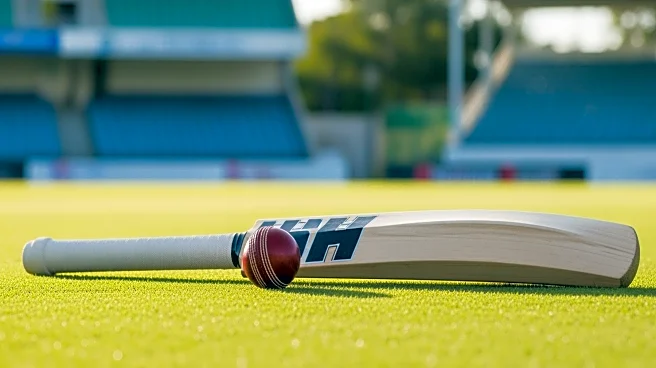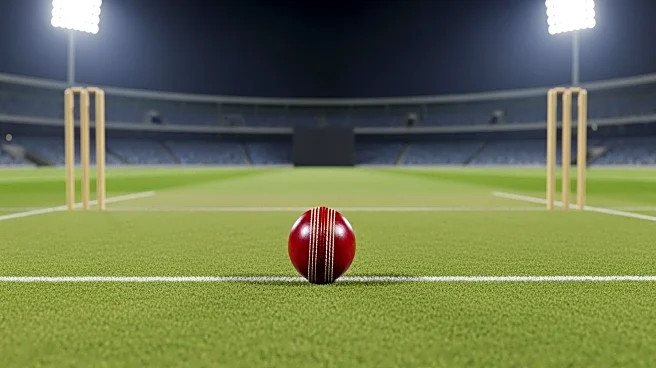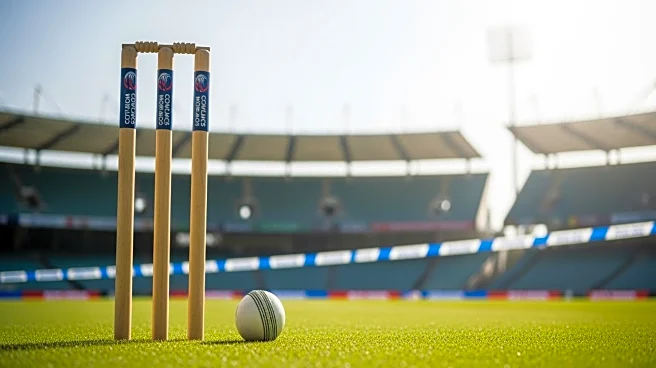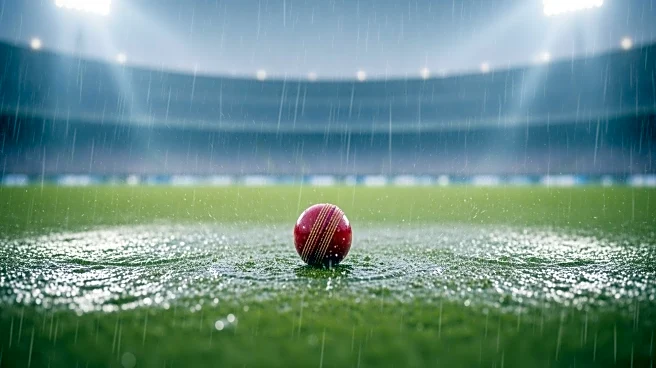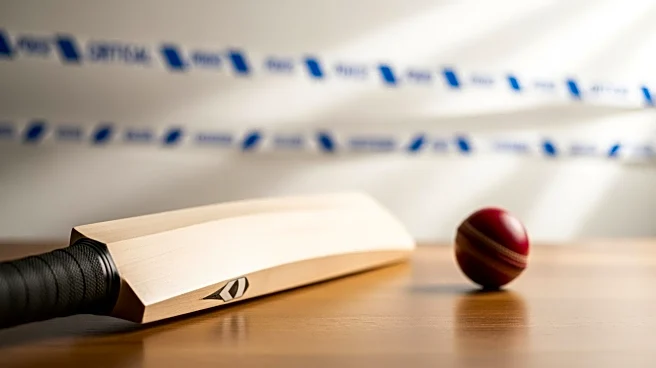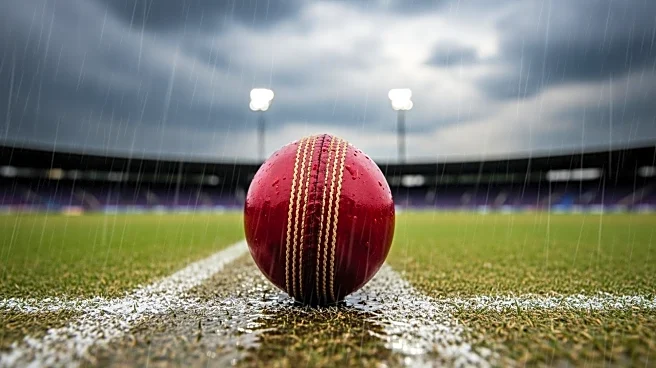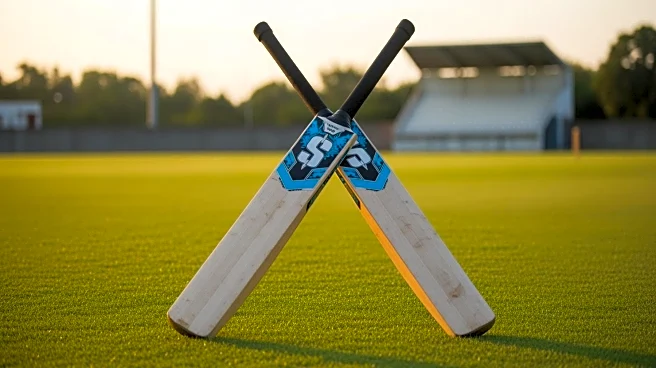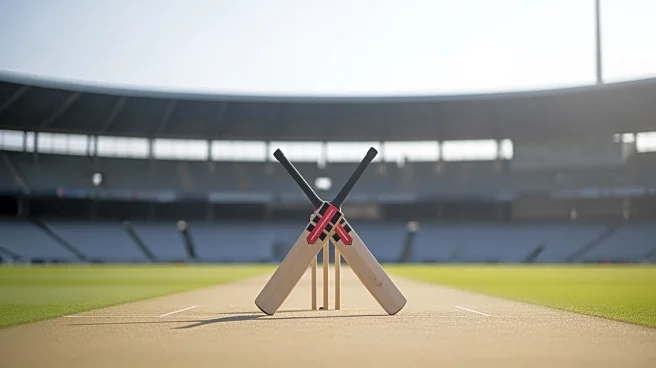What's Happening?
South Africa's women's cricket team achieved a significant victory over Pakistan, winning by 150 runs under the DLS method in a rain-affected match at the R. Premadasa Stadium in Colombo. Marizanne Kapp
and Laura Wolvaardt were instrumental in the win, with Kapp contributing both with the bat and ball. Wolvaardt scored 90 runs, while Kapp added 68 runs and took three wickets for 20 runs. This victory marks South Africa's fifth consecutive win in the Women's World Cup, placing them at the top of the table and confirming Pakistan's elimination from the tournament.
Why It's Important?
The victory is crucial for South Africa as it solidifies their position at the top of the Women's World Cup standings, showcasing their resilience and ability to bounce back after an initial setback in the tournament. The win also highlights the team's strong performance and strategic gameplay, which could influence their future matches and overall standing in the tournament. For Pakistan, the loss signifies the end of their World Cup journey, prompting a need for reflection and strategy reassessment for future competitions.
What's Next?
South Africa will continue their campaign in the Women's World Cup, aiming to maintain their winning streak and secure a place in the finals. The team will need to focus on consistent performance and adaptability to different playing conditions. Pakistan, on the other hand, will need to regroup and analyze their performance to prepare for upcoming international fixtures and improve their standing in future tournaments.
Beyond the Headlines
South Africa's success in the Women's World Cup could have broader implications for women's cricket, potentially increasing visibility and support for the sport. The team's performance may inspire young female athletes and contribute to the growth of women's cricket globally. Additionally, the strategic decisions made by the South African team could serve as a case study for other teams looking to improve their performance in international competitions.


